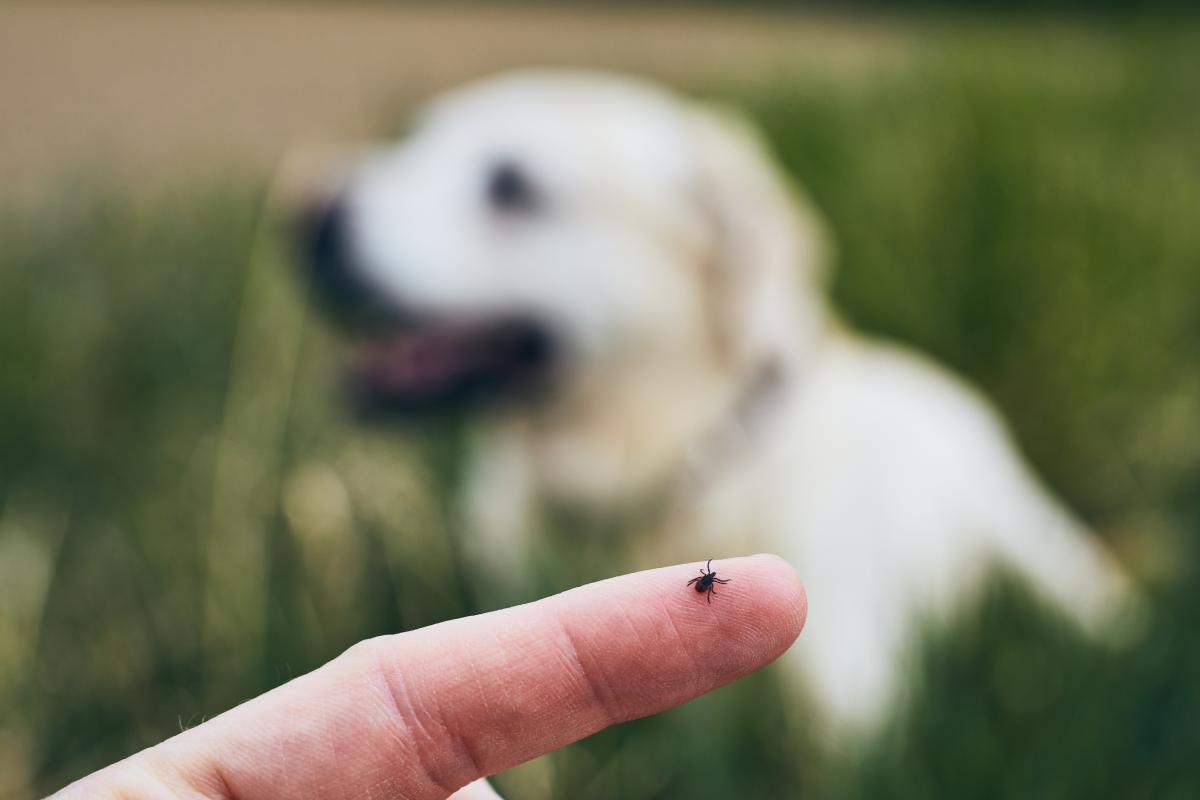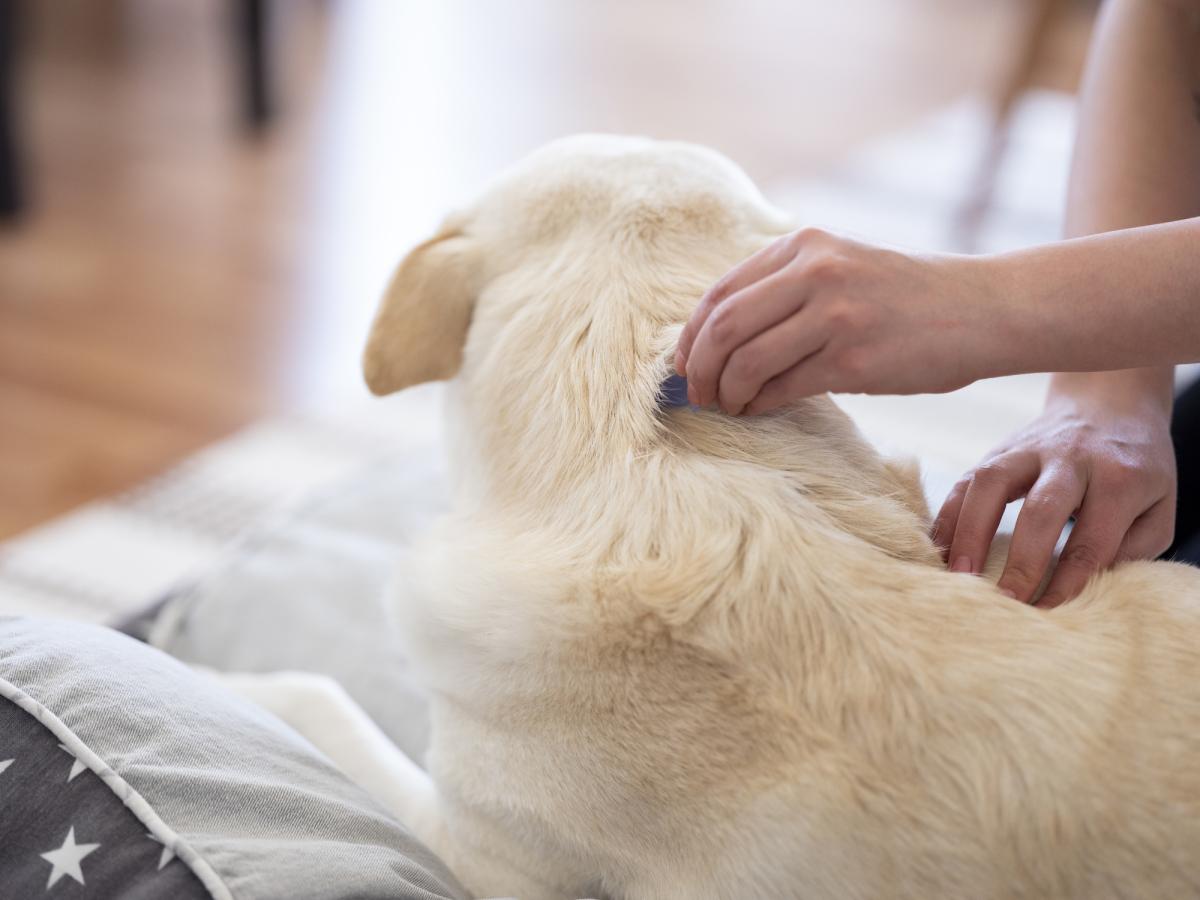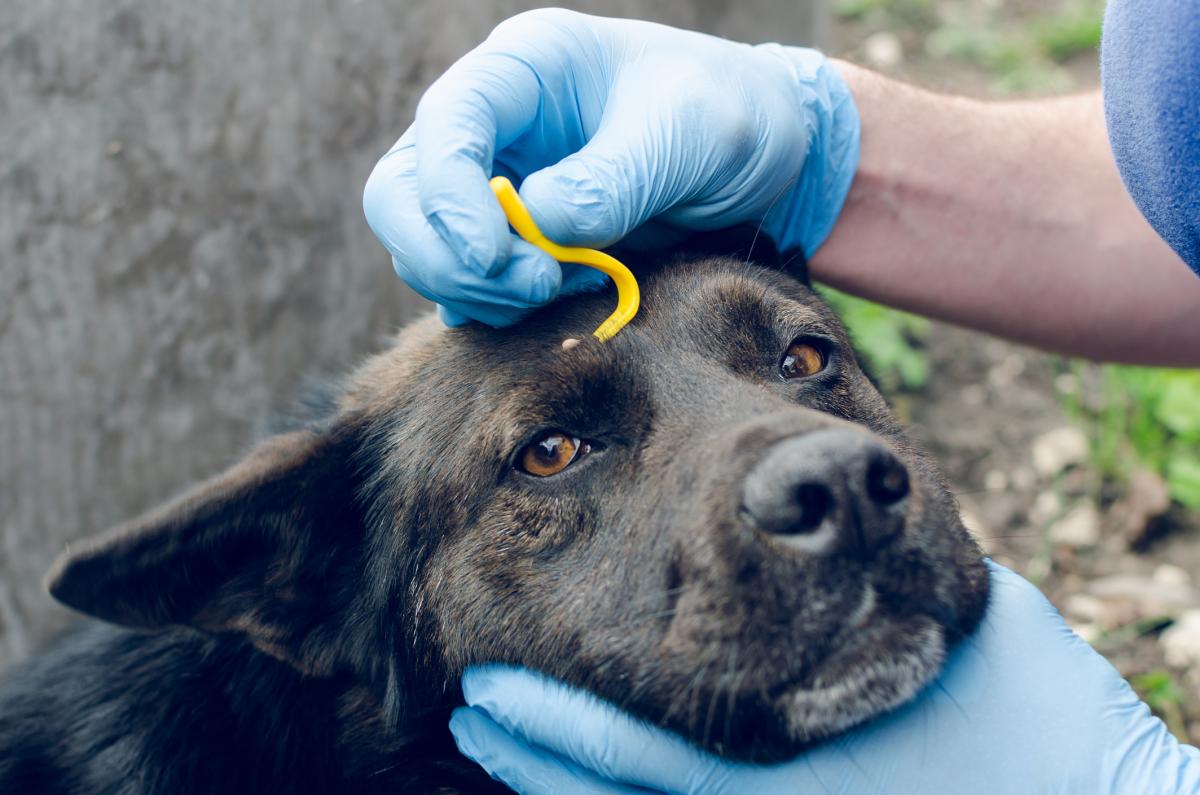Protecting pets from preventable tick-borne illnesses
 The characteristic bullseye rash is a distinct symptom in people who get bit by a tick carrying the bacteria that causes Lyme disease. Although Lyme disease symptoms are apparent in humans soon after infection, clinical signs can take much longer to show up in dogs. Preventing tick bites is the best way to protect the quality of life of pets.
The characteristic bullseye rash is a distinct symptom in people who get bit by a tick carrying the bacteria that causes Lyme disease. Although Lyme disease symptoms are apparent in humans soon after infection, clinical signs can take much longer to show up in dogs. Preventing tick bites is the best way to protect the quality of life of pets.
Prevention starts with understanding local risk. Ticks like to live in different areas depending on the type of tick and the weather. To better understand these patterns of local tick risk, a team of researchers at the University of Guelph’s Ontario Veterinary College (OVC) started collecting ticks from veterinarians across Canada. The local data generated can be used to provide veterinarians and pet owners with information to more effectively limit tick bites in pets. Researchers collected over 4,500 ticks from 94 Canadian veterinary clinics. The results showed that the time of year when ticks are most active and the prevalence of tick-borne pathogens changes between provinces depending on the tick type and the climate.
“While regional data on ticks is available, there is variation within the regions,” says Dr. Katie Clow, OVC professor leading the study. “Providing people with local data on tick populations will allow for more accurate, tailored prevention methods for pet owners.”
Researchers found clear seasonal patterns of when ticks were more active. In Ontario, ticks were more active during spring and fall, while in Saskatchewan, ticks are the most active in spring and summer. Although the warmer months show the most tick activity, ticks were collected from pets during every month of the year.
“People sometimes believe that during winter their pets won’t get bit by a tick, but it’s not uncommon – especially in Southern Ontario,” says Clow. “With climate change, we have warmer periods during winter which increases tick activity.”
The impact of globalized pet adoption
 Ticks live in many regions all around the world. International rescue animals can sometimes carry hitchhiking ticks into Canada and their new homes. “Tick checks aren’t required for rescue dogs coming into the country or before meeting their adoptive family,” says Clow.
Ticks live in many regions all around the world. International rescue animals can sometimes carry hitchhiking ticks into Canada and their new homes. “Tick checks aren’t required for rescue dogs coming into the country or before meeting their adoptive family,” says Clow.
One type of tick imported to Canada via international adoption is the brown dog tick. “When rescuing an animal from another country, pet owners can take precautions to prevent ticks from getting into the home or from spreading new tick species within Canada,” says Clow. “Before a rescue animal goes into the house, it is advised that pet owners complete a simple tick check and organize a primary care visit with a veterinarian on the way home from the shelter.”
How can pet owners protect their pets from ticks?
Cats and dogs can both be affected by ticks, depending on the diseases they carry. Cats do not appear to be susceptible to Lyme disease. Dogs, on the other hand, are susceptible to concerning – and sometimes severe – clinical signs of Lyme disease. Unlike Lyme disease in humans, the clinical signs of Lyme disease in dogs, like shifting lameness, can take three to five months to develop.
 The risk to a pet depends on the time spent outside, areas of play and the local tick information. Being aware of the risk in the area is the first step. Talk to a veterinarian to learn about the local risk of tick bites. Clow says that the most impactful step in tick bite prevention is to perform regular, thorough tick checks after spending time outside and accompany this with tick medication.
The risk to a pet depends on the time spent outside, areas of play and the local tick information. Being aware of the risk in the area is the first step. Talk to a veterinarian to learn about the local risk of tick bites. Clow says that the most impactful step in tick bite prevention is to perform regular, thorough tick checks after spending time outside and accompany this with tick medication.
Tick checks are also valuable to the people living with the pet as ticks don’t just bite animals; they can wander off a pet and bite humans too.
Following the tick prevention recommendations from local veterinarians helps pet owners to ensure they and their pets are safe. To learn more about tick prevention and pets, visit PetsAndTicks.com.
 How to check for ticks
How to check for ticks
Start at the pet’s head and gently comb your fingers through the pet’s fur, feeling for bumps and watching for small black or brown ticks. Ticks may be wandering through the pet’s fur or they could be embedded in the skin resembling a dark skin tag or raised mole.
Check for ticks in the following areas:
- Head
- Neck
- Groin
- Under and on the legs
- Behind and in the ears
- Between toes
- Around the tail
You found a tick — now what?
- Start by putting on gloves. Now, if possible, have someone help hold the pet in place.
- Clear the fur away from the tick and use a pair of tweezers or commercial tick remover to get as close to the pet’s skin as possible and gently secure the tick where the skin and tick are touching. Keeping the tweezers secured on the tick, pull straight out gently, trying not to leave any part of the tick in the pet. Do not pick at the pet’s skin to make sure the whole tick came out; this can increase the chance of infection.
- Save the tick in a plastic bag or jar. Then clean the area with saline solution or a gentle dog-safe antiseptic like chlorhexidine.
- Remove the gloves and wash the tweezers.
- Report the tick found to eTick.ca.
- Complete a thorough tick check on yourself and your cat or dog to see if there are any more ticks. Pay extra attention to the pet’s head, neck and between their toes.
This story originally appeared in the spring / summer 2022 issue of OVC Pet Trust's Best Friends Magazine. Join our community and subscribe to the pet magazine of the Ontario Veterinary College.

